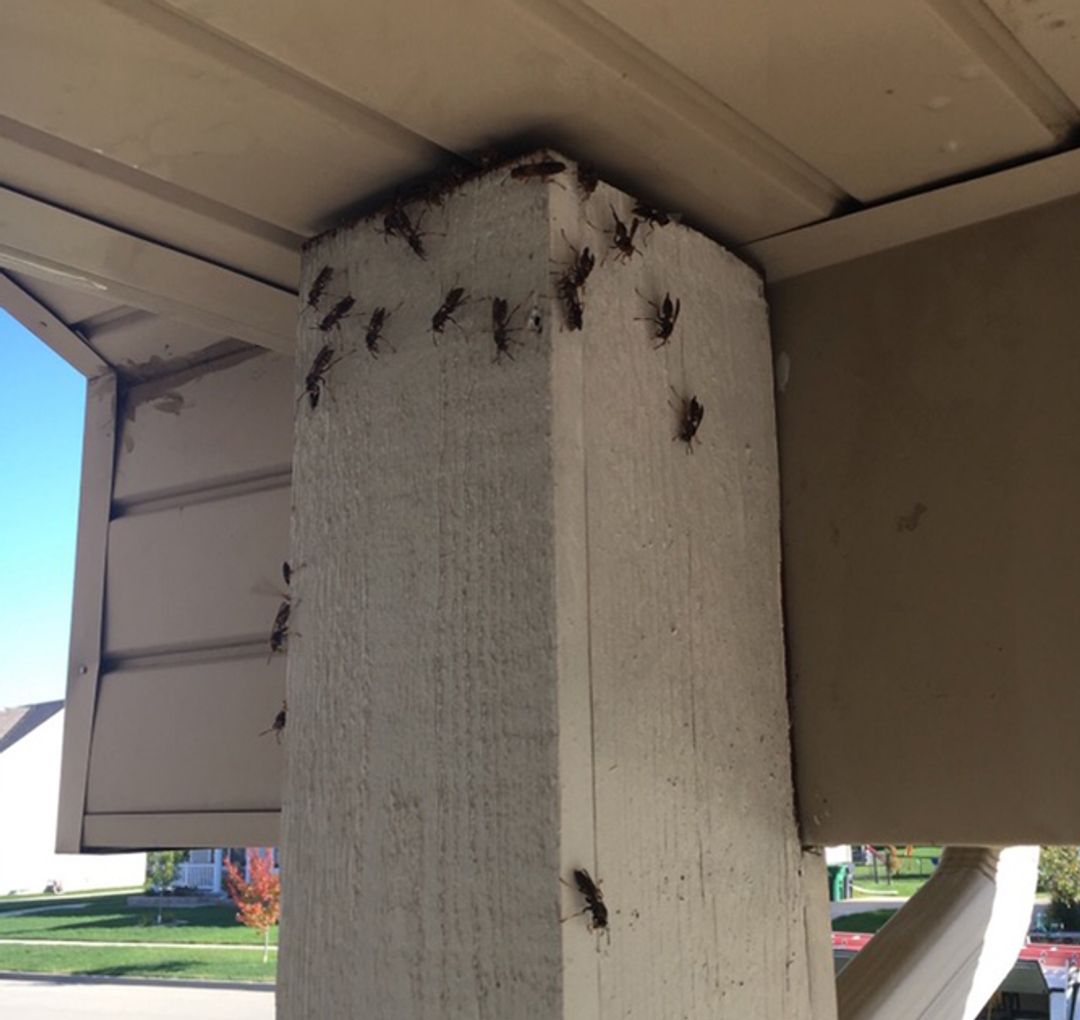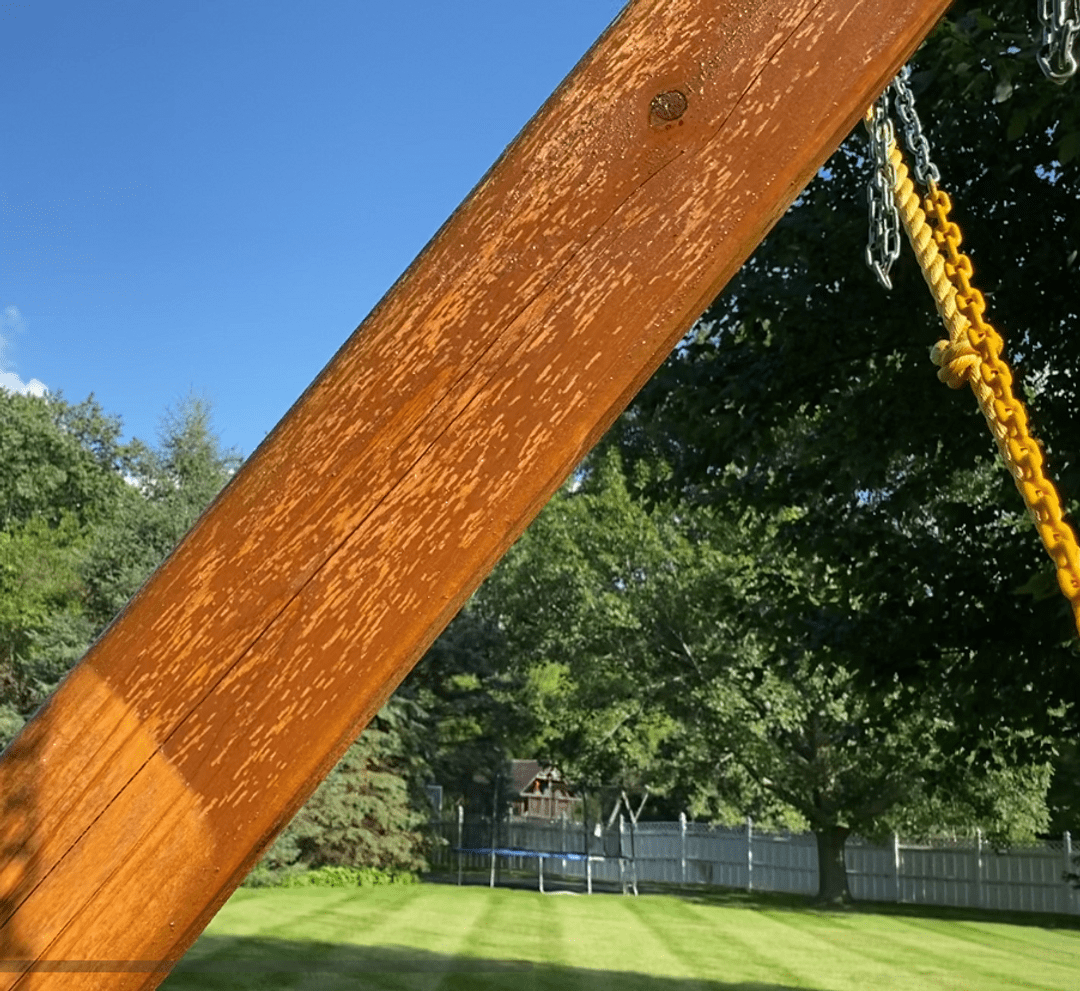What Attracts Wasps & How to Keep Wasps Away
May 10, 2023
Wasps in Iowa can be hard to avoid. Even just seeing a wasp nest on your property can cause fear and anxiety as these buzzing pests are capable of delivering painful stings. It's possible to encounter wasps anywhere in Iowa, and often homeowners will turn to DIY methods such as wasp repellents, wasp traps and more to keep these pests and their nests off their property. But, one great way to avoid wasps in Iowa is by understanding what attracts them. That way, you can ensure there are no wasp attractions in or around your home and hopefully keep wasps away.
Summertime picnics and other things in your backyard may make your home more susceptible to wasp infestations, but these are just a few of the many reasons wasps might pick your yard as their new home. Our wasp control experts are here to help you understand what attracts wasps and how to keep wasps away this summer.
What attracts wasps?
Wasps are most attracted to the nectar of flowering plants. Bright colors and floral prints alone can attract wasps. If there are no plants, wasps will search for fruits or trash in the area as they are attracted to scents like sweet drinks, meats and even things like perfume and cologne. Below our experts have broken down the top reasons you might have wasps on your property and what makes these items so attractive to the buzzing pests:
Fruit trees
In addition to bees and hornets, wasps are quite beneficial to our environment. They often feed on soft-bodied insects that can wreak havoc on our food crops, such as fruit trees. Fruit trees are especially enticing for wasps during the late summer months when their diet shifts from protein-rich insects to sweet and sugary fruits and plants. However, if you have a fruit tree on your property, there's a high likelihood of a potentially dangerous wasp infestation developing near your home if you’re not mindful of picking up fallen fruits!
Bright-colored flowers
Nectar from flowering plants is a major food source for wasps. When they feed on flowers of a particular color, they will associate that color with a food source and are therefore attracted to it. Both flowers and fruits are brightly colored, whether green, yellow, purple, ultraviolet, etc. This is another reason why overripe fruit juices and honeydew are popular, as they are the color of many flowers and still provide wasps with sugar.
Meat
In the spring and early summer, wasps feed on protein. Protein is in almost any food left outdoors, such as pet food, picnic scraps, open garbage containers and more. Meat is an especially great source of protein for wasps. However, unlike wasp larvae with the necessary mouth parts to eat solid food, adult wasps can only consume liquid food. Therefore, adult wasps in the colony will go out and hunt for these food sources, chop up their findings and bring them back to the nest for the developing larvae.
Sweet scents
Wasps will typically feed on small insects, however, their diet shifts to sweets and sugar towards the end of summer, making things like pop, fruit, candy and even colognes and perfumes magnets for these pests. Many of these sweet scents are likely to be found while families are enjoying picnics and kids may be playing outside, making it especially important to be on the lookout for stinging wasps.
Sheltered space
Any sheltered areas around your home can create the perfect nesting spot for wasps. We see this the most if there are any gaps or small crannies wasps can use to start a nest. There are a few main things wasps look for when choosing a location to build their nest:
- Shade
- Warmth
- Coverage
- Little to no access for predators
Looking for any spots on your property that might provide these perfect wasp conditions and eliminating them will significantly reduce your likelihood of having an infestation.

Open water
Wasps are attracted to all forms of liquid because it provides a source of food and energy. Things like standing water in your yard, open pools, running faucets and more provide easy water access for wasps. Wasps often hover over these sources of water to either collect it for consumption or to take it back and share it with their colony. Try to be mindful of avoiding open water sources like these in your backyard.
Untreated wood
Untreated wood provides a great source of pulp, which wasps will use to build their nests. Unfortunately, many things on our properties consist of wood, such as decks, fences, swing sets, storage sheds and more. To greatly reduce wasp activity around your home, ensure patios and walls are not weathered and exposed. Our experts recommend painting or sealing any wooden structure using stain or paint. Our experts recently noticed a swing set with signs of wood damage caused by wasps.

Other insects
In addition to being accidental pollinators, wasps benefit us by killing and controlling the populations of other insects. Unfortunately, this means that if you have preexisting pest infestations, wasps may soon follow. Wasps are also capable of remembering the locations of major food sources. If they decide your home has substantial protein to offer, they won't hesitate to create a nest.
What do wasps eat?
Wasps eat a variety of insects like spiders, caterpillars, ants, aphids, flies, crickets and more. A wasp's diet will vary from species to species, as well as maturity level. Adult wasps will not feed on their prey. They will kill their game, chop it up and take the parts back for the nest to consume. When adult wasps need to eat, they will turn to sugars found in nectar and fruits.
Adult wasps fly from plant to plant in search of nectar. During their hunt, they will passively transfer pollen from flower to flower as it sticks to their bodies, making wasps a valuable contributor to our environment.
Common Places to Find Wasps & How to Prevent Them From Getting Inside Your Home
While most Iowans encounter wasp infestations outside, there are ways for wasps to get inside homes. There are many potential reasons for a wasp infestation to arise in your home, including inadequately sealed openings in doors, windows, walls, etc. Our wasp control experts explain ways you can keep wasps out below:
- Attics & Basements - be sure to seal your eaves and foundations.
- Garage - whether it's attached to your home or not, avoid keeping the door open for extended periods and ensure the seal is securely in place.
- Chimney - uncovered chimneys are easy-to-access points for wasps to get inside a home.
- Dryer Vent & Exhaust Pipes - like many insects, wasps can squeeze their way into tiny places to seek shelter.
- Open Door or Window - wasps may hitchhike into the house on your clothes or bags, or they may come in when given an easy opportunity through doors and windows without screens.
Contact Preferred Pest Control For Professional Wasp Control in Des Moines
Avoid wasps in Iowa this summer with help from the experts at Preferred Pest Control. For decades our technicians have provided effective and lasting wasp control for homeowners in the Des Moines area. Our wasp solutions are designed to remove wasps from your home and keep you and your loved ones safe. Call our office at (515) 276-7277 or schedule an appointment online for wasp solutions you can trust.